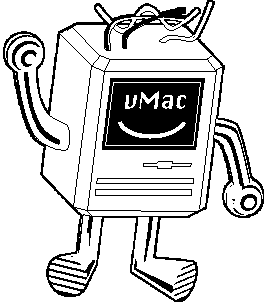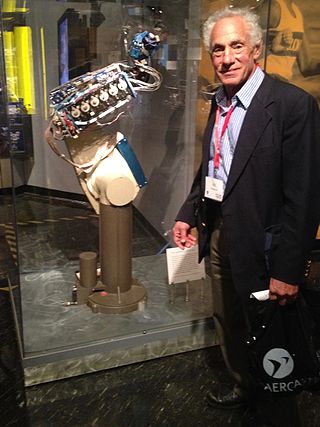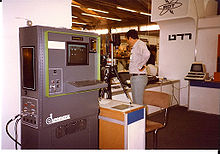
The Motorola 68020 is a 32-bit microprocessor from Motorola, released in 1984. A lower-cost version was also made available, known as the 68EC020. In keeping with naming practices common to Motorola designs, the 68020 is usually referred to as the "020", pronounced "oh-two-oh" or "oh-twenty".
OS-9 is a family of real-time, process-based, multitasking, multi-user operating systems, developed in the 1980s, originally by Microware Systems Corporation for the Motorola 6809 microprocessor. It was purchased by Radisys Corp in 2001, and was purchased again in 2013 by its current owner Microware LP.

The Apple Lisa is a desktop computer developed by Apple, released on January 19, 1983. It is generally considered the first freely available personal computer operable through a graphical user interface (GUI). In 1983, a machine like the Lisa was still so expensive that it was primarily marketed to individual and small and medium-size businesses, as a groundbreaking new alternative to much bigger, much more expensive computers from firms such as IBM, that either required additional, expensive consultancy from the supplier, hiring specially trained personnel, or at least, a much steeper learning curve to maintain and operate.

The Macintosh Classic is a personal computer designed, manufactured and sold by Apple Computer from October 1990 to September 1992. It was the first Macintosh to sell for less than US$1,000.

An industrial robot is a robot system used for manufacturing. Industrial robots are automated, programmable and capable of movement on three or more axes.

VMEbus is a computer bus standard, originally developed for the Motorola 68000 line of CPUs, but later widely used for many applications and standardized by the IEC as ANSI/IEEE 1014-1987. It is physically based on Eurocard sizes, mechanicals and connectors, but uses its own signalling system, which Eurocard does not define. It was first developed in 1981 and continues to see widespread use today.

A SIMM is a type of memory module containing random-access memory used in computers from the early 1980s to the early 2000s. It differs from a dual in-line memory module (DIMM), the most predominant form of memory module since the late 1990s, in that the contacts on a SIMM are redundant on both sides of the module. SIMMs were standardised under the JEDEC JESD-21C standard.

AppleWorks was an integrated office suite containing a word processor, database, and spreadsheet. It was developed by Rupert Lissner for Apple Computer, originally for the Apple II platform and launched in 1984. Many enhancements for AppleWorks were created, the most popular being the TimeOut series from Beagle Bros which extended the life of the Apple II version of AppleWorks. Appleworks was later reworked for the Macintosh platform.

The Yaskawa Electric Corporation is a Japanese manufacturer of servos, motion controllers, AC motor drives, switches and industrial robots. Their Motoman robots are heavy duty industrial robots used in welding, packaging, assembly, coating, cutting, material handling and general automation.

DECtape, originally called Microtape, is a magnetic tape data storage medium used with many Digital Equipment Corporation computers, including the PDP-6, PDP-8, LINC-8, PDP-9, PDP-10, PDP-11, PDP-12, and the PDP-15. On DEC's 32-bit systems, VAX/VMS support for it was implemented but did not become an official part of the product lineup.

vMac is an open source emulator for Mac OS on Windows, DOS, OS/2, NeXTSTEP, Linux, Unix, and other platforms. Although vMac has been abandoned, Mini vMac, an improved spinoff of vMac, is still actively developed. vMac and Mini vMac emulate a Macintosh Plus and can run Apple Macintosh System versions 1.1 to 7.5.5. vMac and Mini vMac support CPU emulation from Motorola 68000 to 68040, display output, sound, floppy disk insert, HFV image files, and more. Some vMac ports include extra features such as CD-ROM support, basic serial port (SCC) support, Gemulator ROM board support, and various performance improvements. Although the website is still in operation, most vMac development slowed to a halt in 1999, and no official releases have been made since. Many of the developer e-mail addresses listed on the website are not currently working.

FANUC is a Japanese group of companies that provide automation products and services such as robotics and computer numerical control wireless systems. These companies are principally FANUC Corporation of Japan, Fanuc America Corporation of Rochester Hills, Michigan, USA, and FANUC Europe Corporation S.A. of Luxembourg.

Omron Corporation, styled as OMRON, is a Japanese electronics company based in Kyoto, Japan. Omron was established by Kazuma Tateishi (立石一真) in 1933 and incorporated in 1948.

George Charles Devol Jr. was an American inventor, best known for creating Unimate, the first industrial robot. Devol's invention earned him the title "Grandfather of Robotics". The National Inventors Hall of Fame says, "Devol's patent for the first digitally operated programmable robotic arm represents the foundation of the modern robotics industry."
KUKA is a German manufacturer of industrial robots and factory automation systems owned by Chinese appliance manufacturer Midea Group.

Victor David Scheinman was an American pioneer in the field of robotics. He was born in Augusta, Georgia, where his father Léonard was stationed with the US Army. At the end of the war the family moved to Brooklyn and his father returned to work as a professor of psychiatry. His mother taught at a Hebrew school.
MacWorks Plus was a complete implementation (port) of the Macintosh Plus 128K ROM on the Apple Lisa and Macintosh XL computer systems, and introduced in August 1988. It was developed for Sun Remarketing of Cache Valley, Utah, under license from Apple Inc., by a contract developer named Chuck Lukaszewski, who was responsible for versions up through 1.1(h), which supported up to Macintosh System 6.0.3. Dafax Processing Corp. with the assistance of Query Engineering, Inc. then further developed the environment to MacWorks Plus II, which continued Macintosh system support up to System 6.0.8 with the Basic version, and introduced a Pro version to extend support to the maximum possible for any 68000 processor: System 7.5.5. Prior to MacWorks Plus, the maximum system supported by its predecessor MacWorks XL was System 3.2.

Datacube Inc. (1978–2005) was an image processing company that developed real-time hardware and software products for the industrial, medical, military and scientific markets. And the datacube enables data to be modeled and viewed in multiple dimensions.

Omron Adept Technology, Inc. is a multinational corporation with headquarters in Pleasanton, California. The company focus on industrial automation and robotics, including software and vision guidance. Adept has offices throughout the United States as well as in Dortmund, Germany, Paris, France, and Singapore. Adept was acquired by Omron in October 2015.

The Aesthedes was a computer graphics or computer-aided design (CAD) system designed and developed in the 1970s and 1980s by Claessens Product Consultants in Hilversum, Netherlands.





















